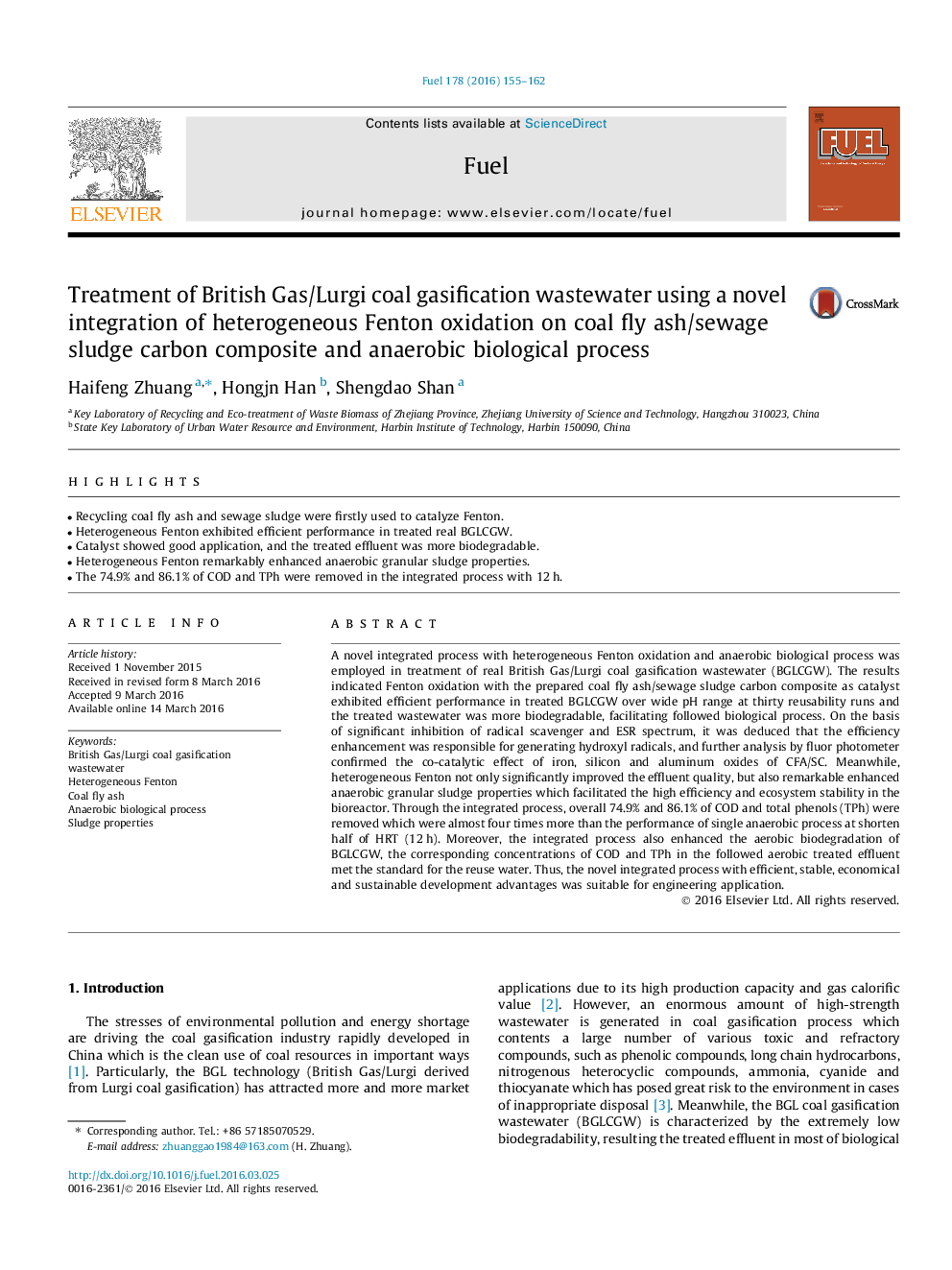| کد مقاله | کد نشریه | سال انتشار | مقاله انگلیسی | نسخه تمام متن |
|---|---|---|---|---|
| 205008 | 461094 | 2016 | 8 صفحه PDF | دانلود رایگان |
• Recycling coal fly ash and sewage sludge were firstly used to catalyze Fenton.
• Heterogeneous Fenton exhibited efficient performance in treated real BGLCGW.
• Catalyst showed good application, and the treated effluent was more biodegradable.
• Heterogeneous Fenton remarkably enhanced anaerobic granular sludge properties.
• The 74.9% and 86.1% of COD and TPh were removed in the integrated process with 12 h.
A novel integrated process with heterogeneous Fenton oxidation and anaerobic biological process was employed in treatment of real British Gas/Lurgi coal gasification wastewater (BGLCGW). The results indicated Fenton oxidation with the prepared coal fly ash/sewage sludge carbon composite as catalyst exhibited efficient performance in treated BGLCGW over wide pH range at thirty reusability runs and the treated wastewater was more biodegradable, facilitating followed biological process. On the basis of significant inhibition of radical scavenger and ESR spectrum, it was deduced that the efficiency enhancement was responsible for generating hydroxyl radicals, and further analysis by fluor photometer confirmed the co-catalytic effect of iron, silicon and aluminum oxides of CFA/SC. Meanwhile, heterogeneous Fenton not only significantly improved the effluent quality, but also remarkable enhanced anaerobic granular sludge properties which facilitated the high efficiency and ecosystem stability in the bioreactor. Through the integrated process, overall 74.9% and 86.1% of COD and total phenols (TPh) were removed which were almost four times more than the performance of single anaerobic process at shorten half of HRT (12 h). Moreover, the integrated process also enhanced the aerobic biodegradation of BGLCGW, the corresponding concentrations of COD and TPh in the followed aerobic treated effluent met the standard for the reuse water. Thus, the novel integrated process with efficient, stable, economical and sustainable development advantages was suitable for engineering application.
Journal: Fuel - Volume 178, 15 August 2016, Pages 155–162
